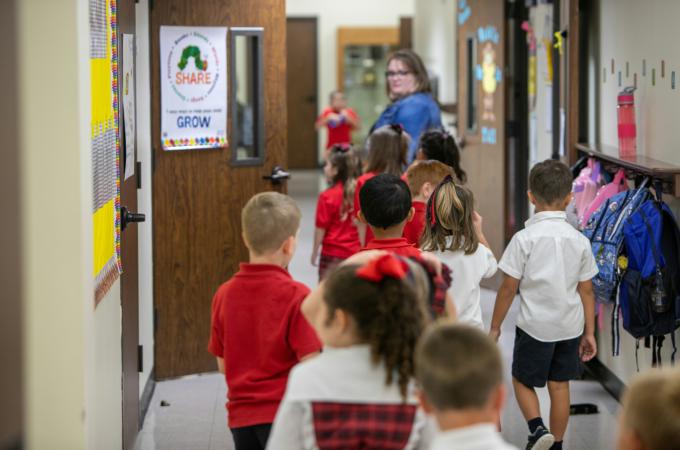Breaking the chains of poverty through Catholic education
When I hear that a Catholic school closes or struggles to stay open, my heart aches. There are more than 14 million school-age Catholic children in our country, 8 million of them Hispanic.
If anything, we should be building Catholic schools, especially where Catholicism is growing. At the very least, we should keep those that exist open and primarily at the service of thea new populations transforming the U.S. Catholic experience.
When I meet people like Father Mark Hamlet from the Diocese of Austin, Texas, a sense of hope invades me. He is impressive: a dynamic pastor, a passionate preacher, a blogger, a radio personality, an advocate and an entrepreneur. He is fluent in English and Spanish, and gets by in other languages.
He is also a family man. Literally. Father Mark is a widower, father of six children and blessed with more than a dozen grandchildren. After the passing of his wife, Cynthia, he went to the seminary and was ordained a Catholic priest in 2010.
Father Mark's passion for Catholic education is inspiring. During a recent trip to Austin, I met with him and learned about the organization he founded: Our Kids at Heart (ourkidsatheart.com), which serves largely as a tuition fund.
The organization was established to support mostly Hispanic Catholic children from Sacred Heart Parish in Austin, living in conditions of economic disadvantage, to attend Catholic schools.More than 150 children currently benefit from this initiative. This is not just a scholarship program but a subsidy effort. In other words, the principle is to empower Catholic families to send their children to Catholic schools and pay the costs by giving them a boost.
This idea of "a boost" is what makes the initiative captivating. The fund cultivates partnerships in which everyone invests: families, schools, philanthropists, the parish community and the diocese.
The model challenges two often taken-for-granted assumptions. One, Hispanic families will only send their children to Catholic schools if it is completely free. Hmmm, yes and no.
Free is attractive, yet even in places where tax credits or vouchers are available, Hispanic families are not necessarily flocking to Catholic schools. This assumption also feeds a model of economic dependence that falls short when philanthropic streams run dry.
Two, Hispanic families are not interested in Catholic education. Creative and collaborative initiatives like Our Kids at Heart prove otherwise. Work with Hispanic families, engage them, make the schools truly inclusive environments, and you will see the difference.
The organization introduces families, mostly immigrant, to the values of Catholic schools and invites them to send their children to these institutions. It is a process of conversion.
This is the biggest hurdle to overcome, according to Father Mark. Many Hispanic and immigrant families do not see Catholic schools as their own. They think that they are completely out of reach. They often feel that they are not welcome.
When Hispanic families get involved, things change. Besides traditional philanthropic sources, Our Kids at Heart relies on the fundraising efforts of these families. Families pay first for their children's education, the fund helps them. That creates a sense of healthy stewardship.
This is a way of returning Catholic education to the poor, says Father Mark. Poverty continues to chain the lives of many Hispanics. We cannot solve that problem with Band-Aids. The chains need to be broken. Catholic schools must serve as "chain cutters." The image reminds us that Catholic evangelization is about freedom.
Yes, let us break the chains of poverty with the help of Catholic education. Nonetheless, make sure that Hispanic Catholic families participate in the process as active agents, not just as passive recipients.
- Hosffman Ospino is assistant professor of theology and religious education at Boston College's School of Theology and Ministry.



















